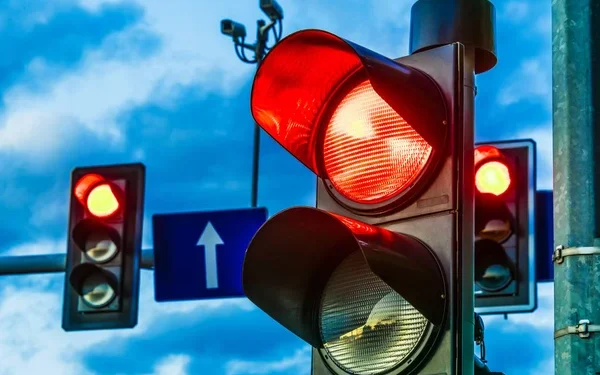Have you ever been in a situation where you’re approaching a red light in Maine, wanting to turn right, and unsure if it’s legal to proceed? The right-turn-on-red rule is a common traffic regulation across the United States, but its specifics can vary slightly between states. Knowing the rules and practicing safe driving habits are crucial for a smooth traffic flow and, more importantly, everyone’s safety on the road. While Maine hasn’t seen any major changes to its right-turn-on-red rule in 2024, this article aims to clarify the existing regulations and provide helpful tips for safe execution. This information is valuable for both new drivers navigating Maine’s roadways and experienced drivers seeking a refresher.
Understanding the Right-Turn-on-Red Rule in Maine
This Article Includes
In the state of Maine, unlike some other areas, you can generally make a right turn on a red light. However, there’s a crucial caveat: this maneuver is only legal unless a specific sign prohibits it. These signs might be marked with clear messages like “No Turn on Red” or display illuminated red arrows. Common reasons for such restrictions include high-pedestrian areas near schools or busy intersections with complex lane configurations.
It’s important to remember that even if you don’t see any oncoming traffic, coming to a complete stop before turning right on red is absolutely mandatory. The temptation to perform a “rolling stop” can be strong, but it’s a dangerous practice that can lead to accidents and traffic violations.
Before proceeding with your turn, always yield the right-of-way to pedestrians in crosswalks and any oncoming traffic that has the green light. Pay close attention to pedestrians, especially those who might be harder to see, such as children or the elderly. Defensive driving principles come into play here – be constantly aware of your surroundings and anticipate potential hazards.
Safe Turning Procedures
Here’s a step-by-step guide to safely executing a right turn on red in Maine:
- Approach the intersection with caution and prepare to stop. As you near the red light, slow down gradually and get ready to come to a complete stop.
- Come to a complete stop at the designated stop line. This is typically a white line painted on the road before the intersection. If there’s no marked stop line, stop before entering the crosswalk.
- Activate your right turn signal. This alerts other drivers of your intention to turn.
- Check for oncoming traffic in both directions. Ensure there are no vehicles approaching from the left that have the green light.
- Look for pedestrians in all crosswalks. This includes those walking in the opposite direction who might be turning left onto the road you’re turning onto.
- If the coast is clear and you have the right-of-way, proceed cautiously with your right turn. Don’t rush into the turn; make sure it’s safe to do so before completing the maneuver.
Examples and Scenarios
Let’s explore some real-life situations you might encounter and how to approach them using the right-turn-on-red rule safely:
- Scenario 1: Quiet Suburban Intersection: Imagine you’re driving in a quiet suburban area and approach a red light at a simple four-way intersection. You have a clear view of the road in both directions and no pedestrians are crossing. After coming to a complete stop and checking for oncoming traffic and pedestrians, you can safely proceed with your right turn when the coast is clear.
- Scenario 2: Busy Intersection: Now, consider a busy intersection with multiple lanes of oncoming traffic. Here, extra caution is necessary. Come to a complete stop and wait for a significant gap in traffic before attempting your turn. If the gap is too small or the wait seems excessive, consider waiting for the light to turn green for a safer turn.
- Scenario 3: Pedestrians Present: You’re approaching a red light and see a pedestrian crossing the street in the opposite direction. In this case, you must yield the right-of-way to the pedestrian completely before making your right turn. Never proceed with the turn if it could put a pedestrian at risk.
Additional Safety Tips
Here are some additional safety tips to keep in mind when making right turns on red:
- Minimize distractions: Avoid using your phone, loud music, or engaging in activities that take your attention away from the road while approaching and turning at red lights.
- Nighttime and low-visibility conditions: Be extra cautious when driving at night or during low-visibility conditions like fog or rain. Increase your stopping distance and allow more time to react to potential hazards.
- Adjust for weather: During inclement weather like rain or snow, adjust your stopping distance accordingly. Slick roads require more time and space to come to a complete stop.
- When in doubt, wait: If you’re unsure about whether you have the right-of-way or the situation seems unclear, err on the side of caution. It’s always better to wait for a green light than risk an accident.
Conclusion
Understanding and following Maine’s right-turn-on-red rule is essential for safe and efficient driving. Remember, even though a right turn on red might be permitted, always prioritize safety. Come to a complete stop, yield the right-of-way to pedestrians and oncoming traffic, and only proceed when it’s clear and safe to do so. By following these guidelines and practicing defensive driving habits, we can all contribute to a safer and more pleasant driving experience on Maine’s roads.
Additional Resources
For more information on Maine’s traffic laws and the right-turn-on-red rule, you can visit the official Maine Department of Motor Vehicles (DMV) website: https://www.maine.gov/sos/bmv/. The DMV website also offers resources on defensive driving techniques, which can be helpful for all drivers, regardless of experience level.
Following traffic rules and practicing safe driving habits are not just about protecting yourself; they contribute to the safety of everyone on the road. Let’s all be responsible drivers and make Maine’s roadways a safer place for everyone.










